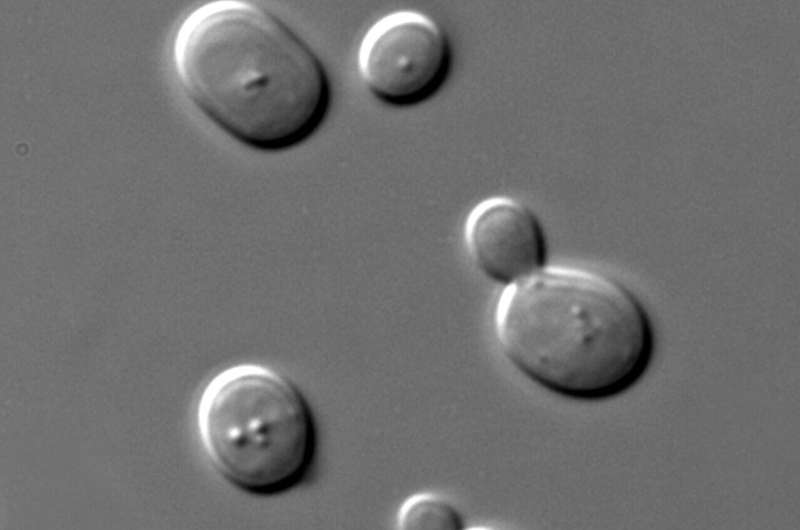
Yeast has been used for thousands of years in the production of beer and wine and for adding fluff and flavor to bread. They are nature’s tiny factories that can feed on sugars found in fruit and grains and other nutrients—and from that menu produce alcohol for beverages, and carbon dioxide to make bread rise.
Now, researchers at the School of Engineering report making modified yeast that can feed on a wider range of materials, many of which can be derived from agricultural by-products that we don’t use—leaves, husks, stems, even wood chips, things often referred to as “waste biomass.”
Why is it important to make yeast that can feed on these agricultural leftovers?
In recent years, scientists have modified yeast to make other useful products like pharmaceuticals and biofuels. It’s a clever way to let nature do our work in a way that does not require toxic chemicals for manufacturing. The technology—referred to as “synthetic biology”—is still young, but looking ahead to a future where biosynthetic production from yeast would operate at a very large scale, we need to feed yeast on something other than what we ourselves need to eat.
Engineering yeast to grow on biomass sugars
The novel yeast made by the Tufts team can feed on sugars like xylose, arabinose, and cellobiose, which can be extracted from the indigestible woody parts of crops that are often tossed aside after harvesting, such as corn stalks, husks and leaves, and wheat stems. About 1.3 billion tons of this waste biomass is produced each year, providing more than enough sugars to drive a vast industry of yeast biosynthesis.
“If we can get yeast to feed on waste biomass, we can create a biosynthetic industry with a low carbon footprint,” said Nikhil Nair, associate professor of chemical and biological engineering. “For example, when we burn biofuels made by yeast, we produce a lot of carbon dioxide, but that carbon dioxide is re-absorbed into crops the following year, which the yeast feed on to make more biofuel, and so on.”
Minimal engineering for maximum output
Nair and his team thought that the best chance for efficient consumption of waste biomass sugars might be to modify an existing genetic “dashboard” that the yeast uses to regulate consumption of galactose, a sugar commonly found in dairy products.
The dashboard, called a regulon, includes genes for sensors that detect the presence of sugar, and triggers enzymes for the chemical breakdown of sugar so its carbon and oxygen components can be rebuilt into new components. The new components are mostly small molecules and proteins that the yeast itself needs to survive, but they can also be novel products that scientists might have engineered into the yeast.
In an earlier study, the researchers modified the galactose regulon so that the sensor detects the biomass sugar xylose, and triggers enzymes to process xylose instead of galactose.
“Getting yeast to grow on xylose was an important advance,” said Sean Sullivan, a graduate student in the Nair lab who co-led the recent study published in Metabolic Engineering, “but re-engineering different yeast organisms to grow on each biomass sugar is not the best approach. We wanted to design a single yeast organism that can feed off a complete, or nearly complete menu of biomass sugars.”
Sullivan made only minimal changes to the regulon already designed for xylose, by changing the sensor protein to more generally accept xylose, arabinose, and cellobiose. Apart from a few more minor changes, the new regulon allowed the yeast organism to grow on these three sugars at rates comparable to yeast grown on native sugars glucose and galactose.
“By using native regulatory networks linked to cell growth and survival, we could take a minimal engineering approach to modifying and optimizing sugar consumption,” said Vikas Trivedi, a postdoctoral researcher who co-led the study. “It just so happens that yeast has the machinery to grow on non-native sugars, as long as we adapt sensors and regulons to recognize those sugars.”
Improving the back end of production
Remodeling yeast to grow on waste biomass sugars sets the stage for improved production of biosynthesized products, which includes drugs such as insulin, human growth hormone, and antibodies. Yeast has also been engineered to produce vaccines by expressing small fragments of virus that stimulate the immune system.
In fact, yeast can be re-engineered to produce natural compounds used to make drugs, which are otherwise difficult to source because they have to be extracted from rare plants. These include scopolamine, used for relieving motion sickness and postoperative nausea, and atropine, used to treat Parkinson’s disease patients, and artemensin, used to treat malaria.
Ethanol is a well-known biofuel produced by yeast, but researchers have also engineered the organism to produce other fuels such as isobutanol and isopentanol, which can deliver more energy per liter than ethanol.
Bioengineered yeast can also produce building blocks of bioplastics, such as polylactic acid, which can then be used to make a variety of products, including packaging materials and consumer goods, without having to draw from petroleum sources.
“While the research community continues to innovate yeast to make new products, we are preparing the organism to grow efficiently on agricultural waste biomass, closing a carbon cycle that has so far eluded the manufacturing of fuels, pharmaceuticals and plastics,” said Nair.
More information:
Sean F. Sullivan et al, Towards universal synthetic heterotrophy using a metabolic coordinator, Metabolic Engineering (2023). DOI: 10.1016/j.ymben.2023.07.001
Provided by
Tufts University
Citation:
Bioengineered yeast feed on agricultural waste (2023, July 19)
retrieved 20 July 2023
from https://phys.org/news/2023-07-bioengineered-yeast-agricultural.html
This document is subject to copyright. Apart from any fair dealing for the purpose of private study or research, no
part may be reproduced without the written permission. The content is provided for information purposes only.










